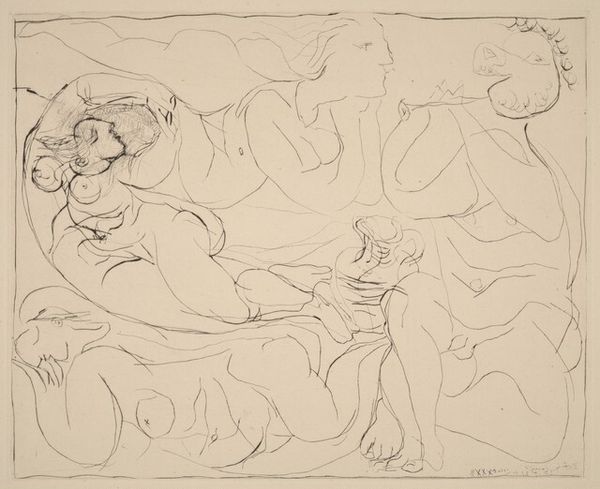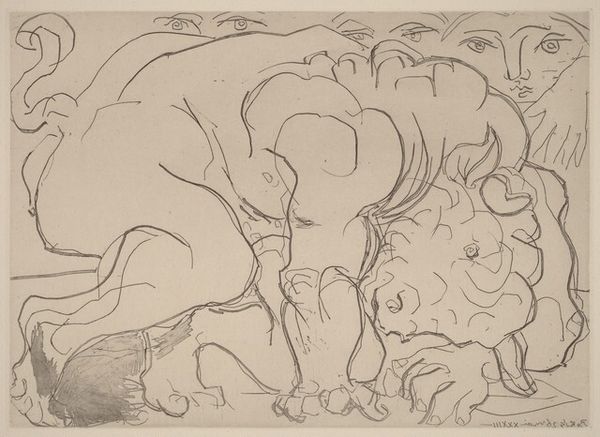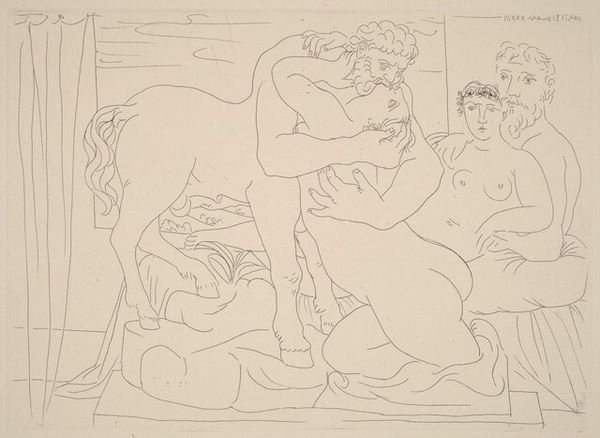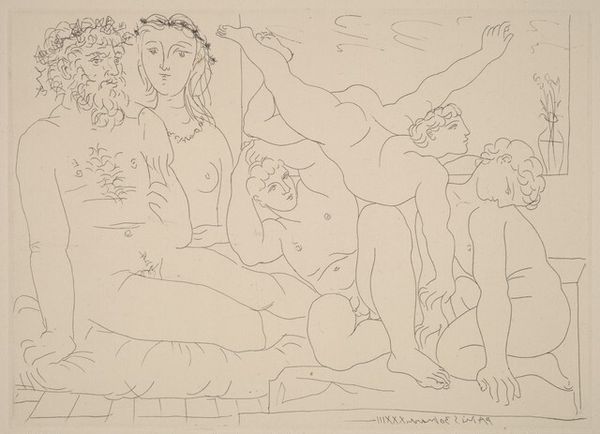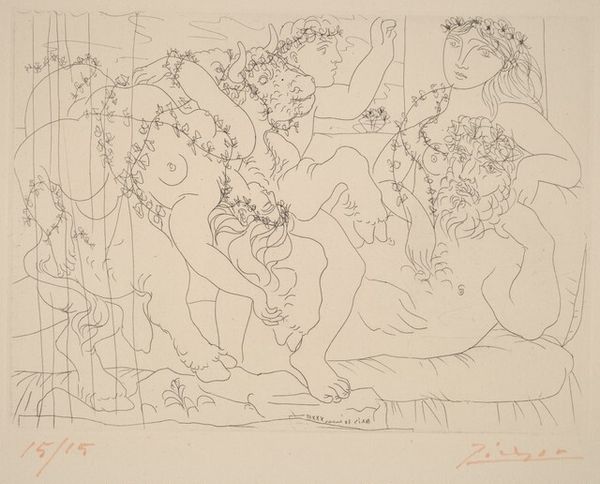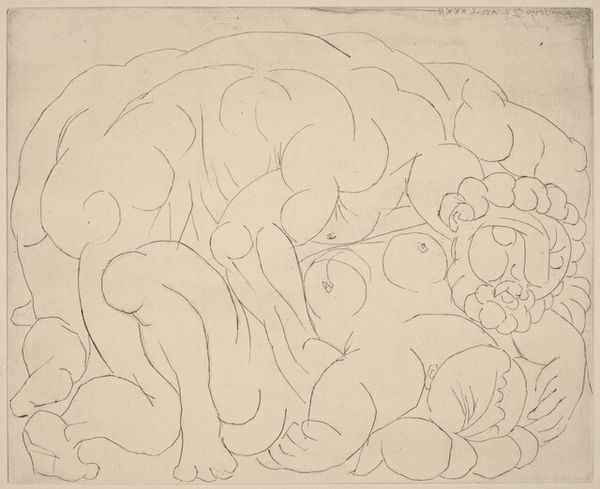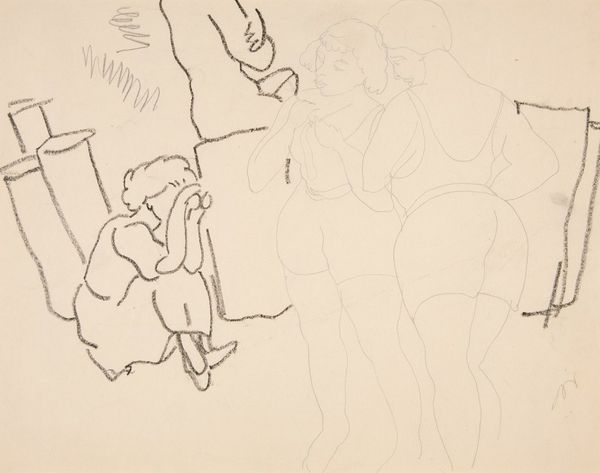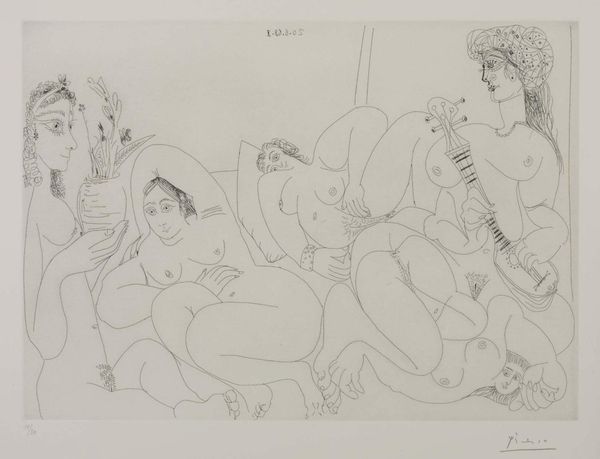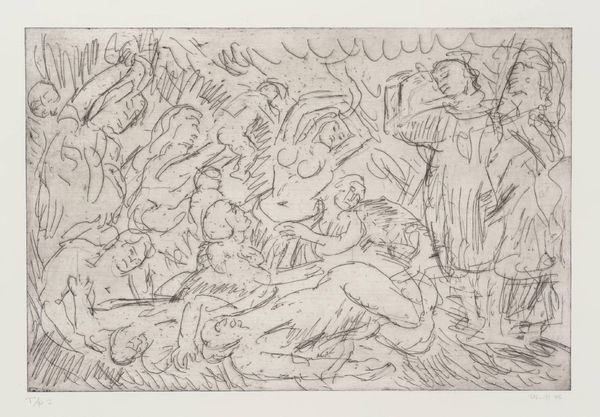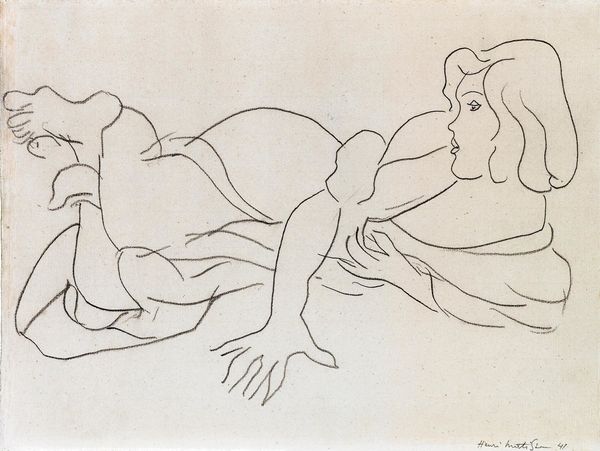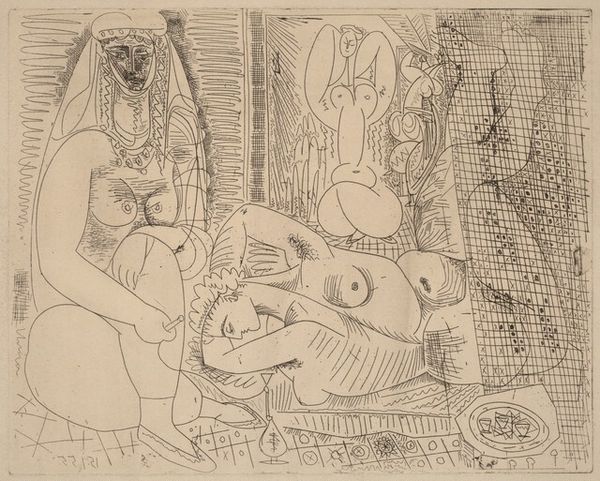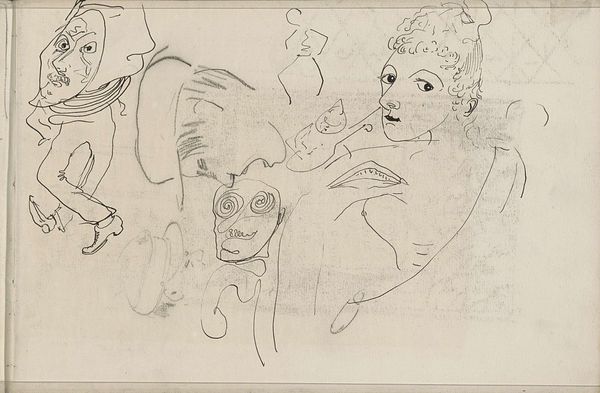
drawing, print, etching
#
portrait
#
drawing
#
cubism
#
ink drawing
# print
#
pen sketch
#
etching
#
pencil sketch
#
figuration
Copyright: National Gallery of Art: CC0 1.0
Curator: This is "Circus. Repetition," an etching created by Pablo Picasso in 1933. It's an intriguing example of his linear style. Editor: It's sparse, almost like a blueprint for a circus scene. But even in this limited medium, there’s so much implied energy and precarious balance. I wonder, what drove Picasso to the circus motif? Curator: The circus fascinated Picasso, offering a microcosm of society with its hierarchies, performers, and spectators. The early 1930s marked a time when Picasso increasingly looked at how performers embodied concepts of illusion, spectacle, and social roles. The theme provided him a means to scrutinize modern performance within established conventions of representation. Editor: I'm drawn to how he uses just lines to capture movement and form. There's the equestrian, the tumbling figure… each echoes archetypes present throughout history, re-performed with every telling. And then this detached figure watching from the side, maybe the ringleader or a representation of Picasso himself, the detached observer. Curator: Consider how these representations challenged prevailing academic notions about performance and identity during this tumultuous period between the wars. Picasso saw how these popular forms negotiated questions of social mobility through exaggerated roles, impacting perceptions that shaped wider audiences. Editor: The repetition in the title feels crucial, implying cycles not just in the literal circus acts, but perhaps in the larger theater of social conventions and repetitive roles we find ourselves playing out. The figures echo and replay similar patterns and stances, as in theatre. Curator: It becomes a meditation, reflecting how society's structures, even within entertainment, perpetuate roles and behaviours, which art may then examine, legitimize or contest. Editor: Looking closely reveals not just a depiction of a spectacle but a stage for the constant renegotiation of identity, control, and spectacle—aren’t we all always negotiating? Curator: Indeed. Picasso here allows us a window to appreciate that artistic engagement as a cultural discourse shaping its contemporary understanding through familiar forms. Editor: And so an economical depiction leads us to quite a wide understanding! Curator: Agreed, this work epitomizes that engagement within popular cultural discourse of the early 20th century.
Comments
No comments
Be the first to comment and join the conversation on the ultimate creative platform.
